Un-compliant Mechanisms is an exploration of a world where humans are not the sole rulers of their surroundings, but rather co-habitants with objects, commodities, and the environment as a whole.
The "exaggerated products" designed within Un-compliant Mechanisms aim to bring accountability to the human conscience—encouraging self-awareness in the everyday actions performed within the home.
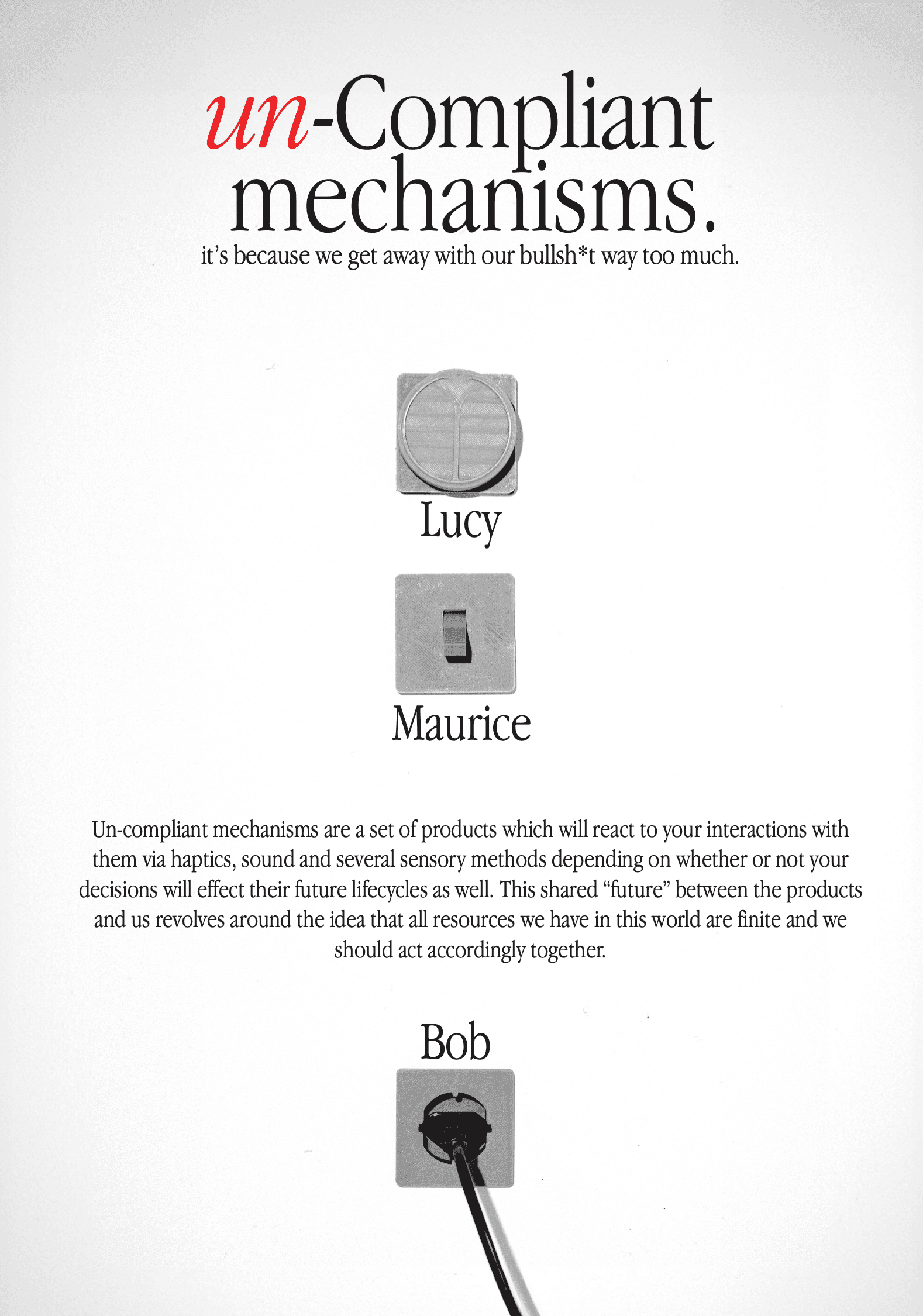
1. What criteria guided your selection of materials for the 3D-printed components, particularly in balancing flexibility with structural integrity?
My process usually begins with preliminary research and early-stage prototyping using basic PLA—a dependable material that helps quickly assess the feasibility of a form. Once I confirm the conceptual integrity, I pivot to exploring more specific material properties based on the functional demands—like flexibility or structural robustness. That said, I’ve found that a strictly technical mindset can stifle creative exploration. To counterbalance that, I rely heavily on trial and error. Owning a 3D printer enables rapid iteration: I prototype, stress-test, revise, and repeat—often within a matter of minutes. The stress tests I run are inspired by my background in computer science, where we often conducted load testing that exceeded real-world conditions to ensure resilience.
2. Could you elaborate on the challenges faced during the integration of electronic components within the flexible structures, and how these were addressed?
A key challenge is the lack of accurate 3D models for most electronic components. In my current work with audio systems, for instance, the manufacturer-supplied models of speaker drivers are often not faithful to the physical parts we receive—likely due to reverse-engineering concerns. This gap in fidelity creates a disconnect between virtual and real-world fit. On top of that, tolerances accumulate quickly in fast-paced 3D printing workflows. Perfection is rarely achievable, especially with motors or servos, where the smallest mismatch can result in power loss or inefficient motion. To manage this, I prioritize flexibility in design: I model with generous clearances and treat physical assembly as its own iterative process.
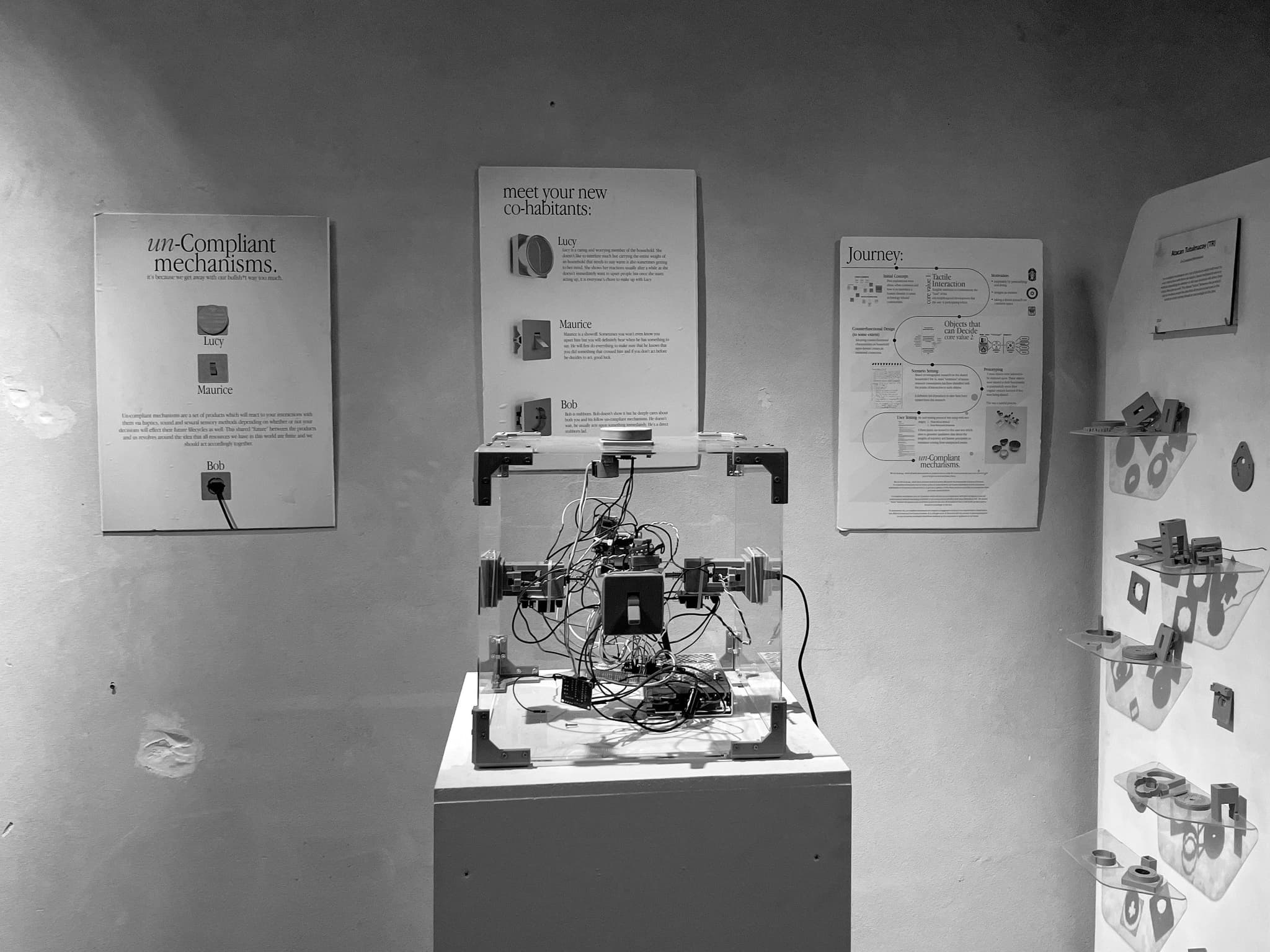
3. In developing the responsive behaviors of the appliances, how did material choice influence the range and subtlety of the reactions?
Interestingly, one of the most influential yet overlooked aspects was sound—the resonance created when different plastics interact with movement. When designing something like a light switch, it wasn't just about the tactile feedback, but also the acoustic texture of the action. I had to muffle the harsh “click” of a mechanical microswitch by designing a soft enclosure, allowing a more refined auditory signature to take center stage. These sonic subtleties became an unexpected, but welcome, byproduct of my material experimentation.
4. Were there any specific manufacturing techniques employed to achieve the desired material properties, such as specific 3D printing methods or post-processing treatments?
Yes—my approach borrows heavily from my background and family heritage. With an architect father and a civil engineer uncle, I was surrounded by material craftsmanship growing up. From woodworking to concrete forming and mold-making, I absorbed a variety of techniques that now influence my hybrid manufacturing logic. In many cases, I reverse-engineer old appliances I’ve taken apart over the years, drawing from their mechanical DNA. It’s this layered, eclectic methodology that allows me to create with unexpected combinations and tactile diversity.
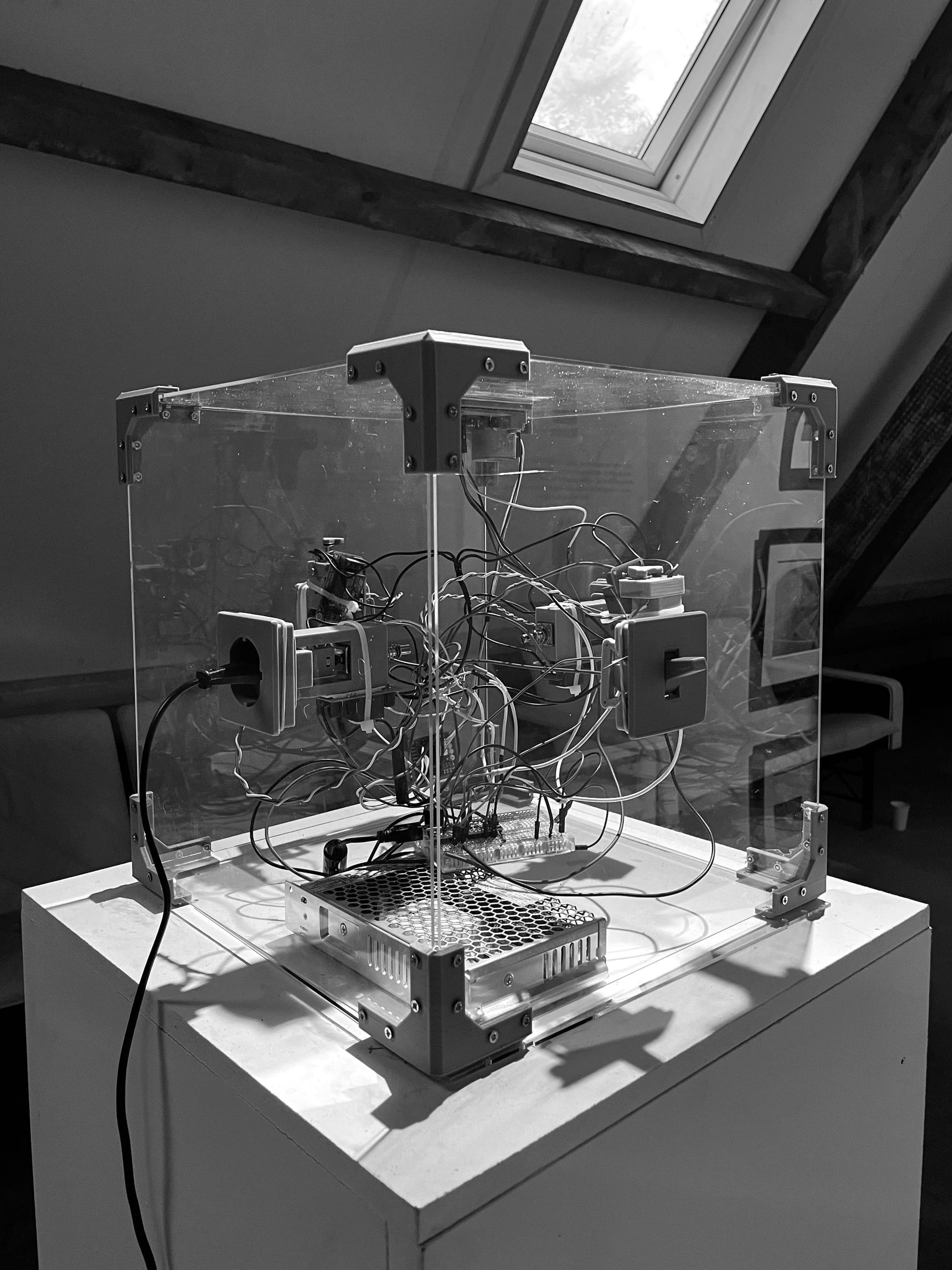
5. How did you ensure consistency in the material properties across different prototypes, given the potential variability in additive manufacturing processes?
This was a huge learning curve for me—it was my first deep dive into hands-on 3D printing. One key insight: machine tuning matters. I found that slower printing speeds and careful calibration drastically improved material consistency. I also realized that expecting printed moving parts to function seamlessly without post-processing is unrealistic. Embracing those imperfections helped shift my design priorities toward simplicity and adaptability. Luckily, my parts were small and quick to produce—often under 20 minutes—allowing me to maintain rapid design-test cycles without bottlenecks.
6. In what ways did the material choices impact the maintenance and longevity of the appliances, considering their interactive and dynamic nature?
My projects weren’t meant to be consumer-ready appliances—they were more like dialogues or provocations in design. That said, they held up remarkably well under the physical stress of public exhibitions like Dutch Design Week. The only major issue I faced was thermal degradation: one prototype, powered by a 6V solenoid, softened due to excessive heat buildup in the PLA housing. This led me to reconsider not just the electronic components but also the thermal behavior of the surrounding material—a crucial lesson for future designs that involve repeated actuation.
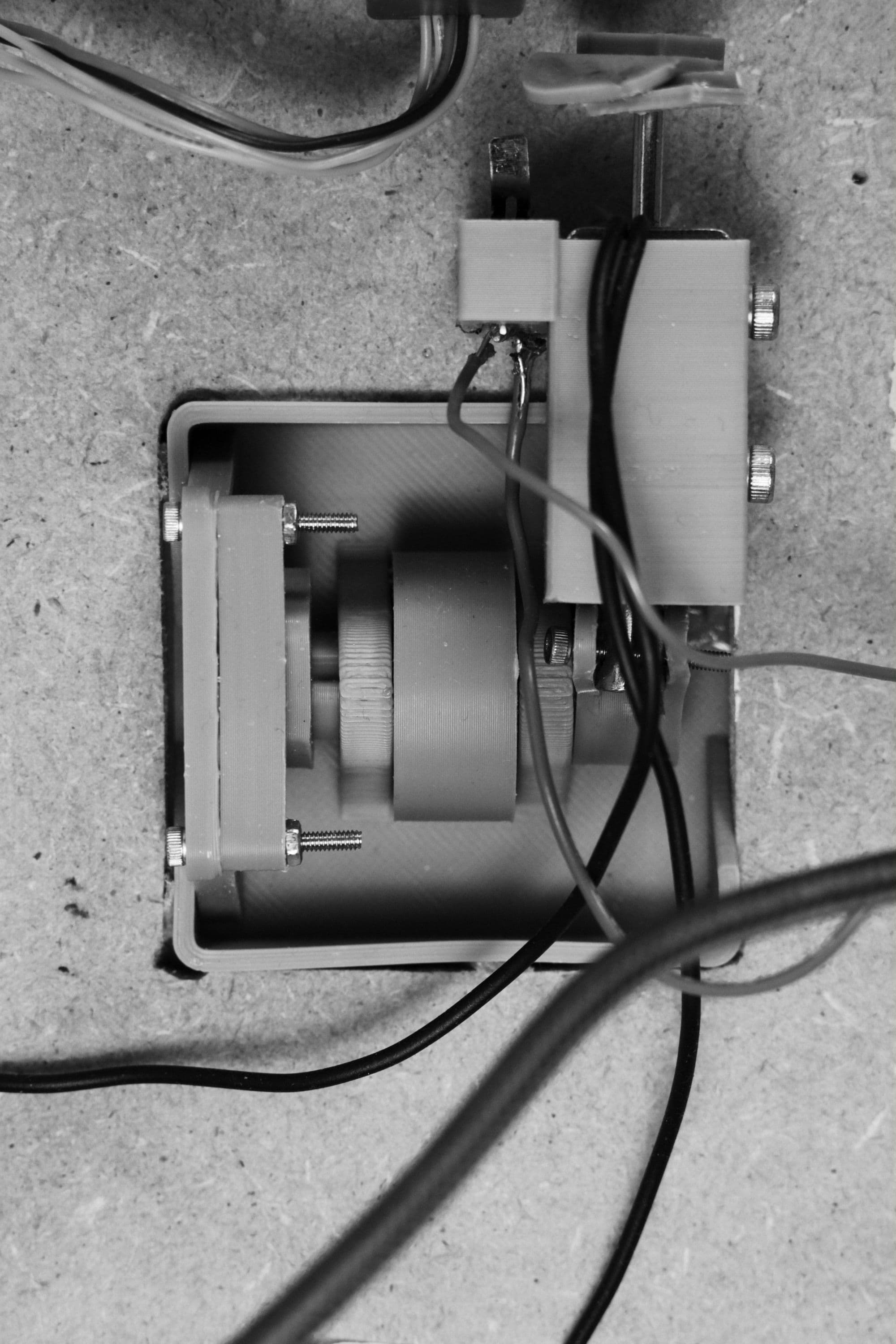
7. How did the interplay between material properties and electronic components influence the overall energy efficiency of the appliances?
This is only partially applicable. Un-Compliant Mechanisms are meant as behavioral extensions, not as full appliances themselves. However, I did encounter energy inefficiencies caused by mechanical friction between raw 3D-printed parts. These friction points forced my solenoids to draw more current than rated—something I addressed by upgrading from a 6V to a 12V system. It was a clear example of how even small mismatches in material smoothness can significantly affect electronic performance.
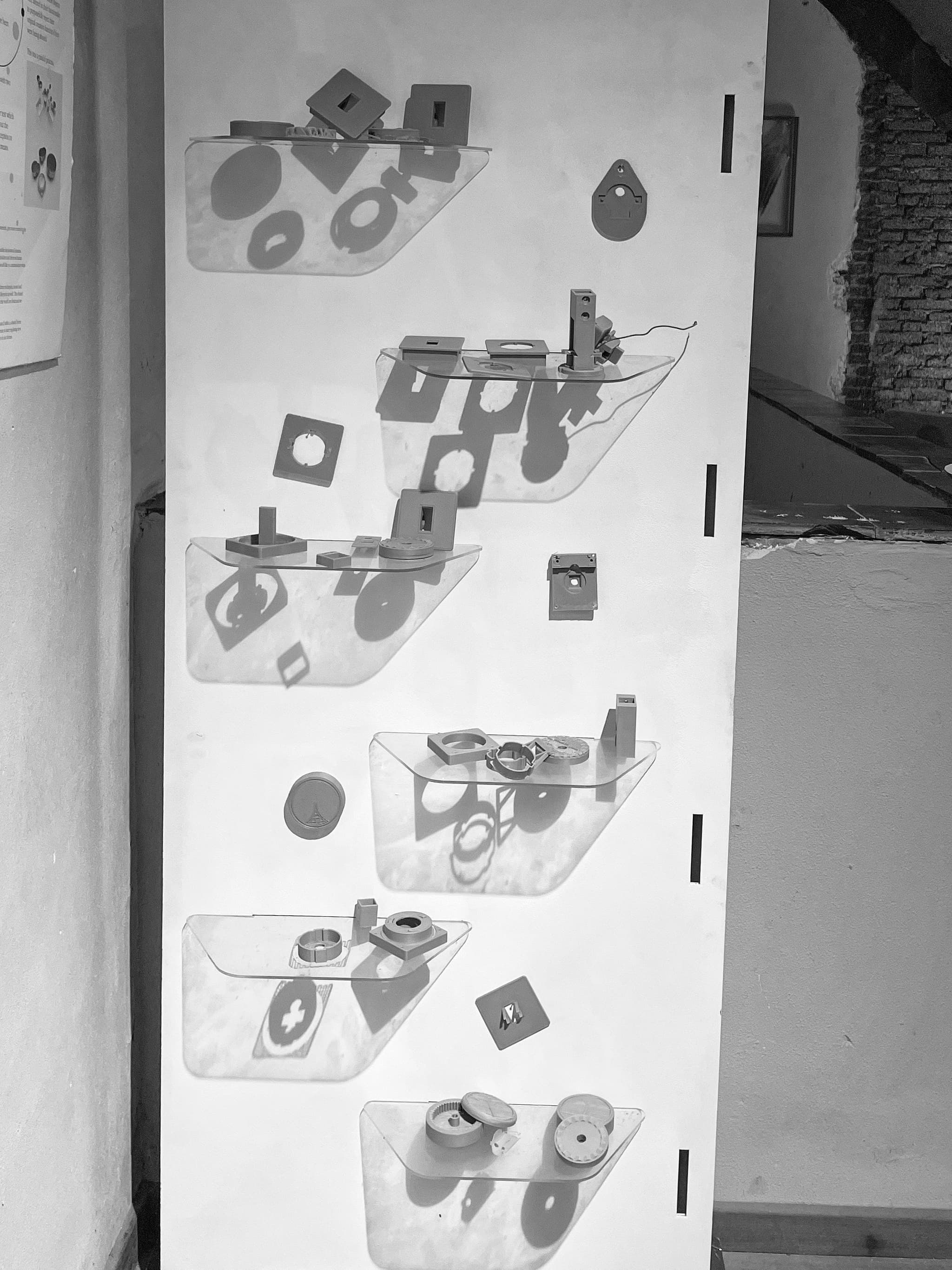
8. Looking ahead, what advancements in material science do you anticipate could further evolve the concept of Un-Compliant Mechanisms?
The future lies in stronger yet more pliable materials. These would allow me to integrate more components in tighter spaces, build more reliable forms, and expand the expressive range of misbehavior in the design. New material blends could also unlock previously impractical interactions—such as multi-phase responsiveness or embedded sensing—without sacrificing the playful defiance at the heart of Un-Compliant work.








